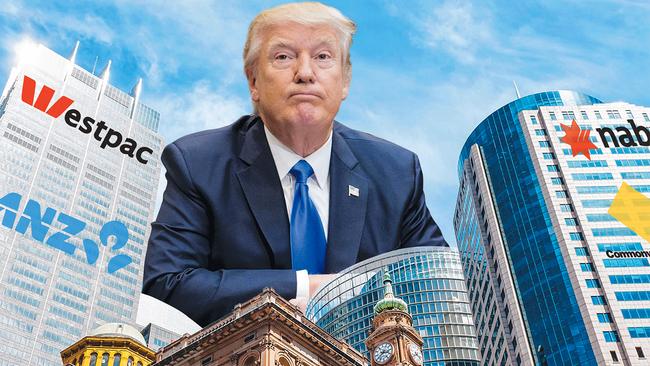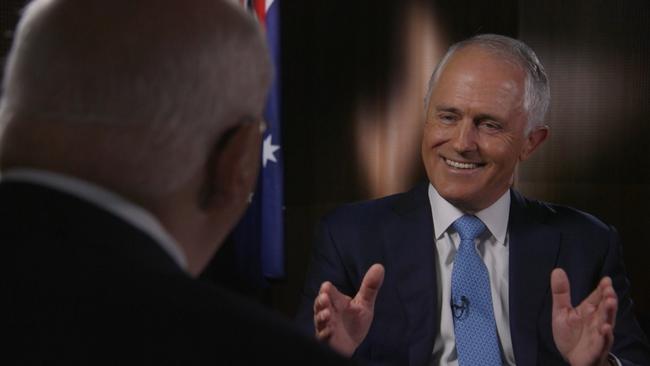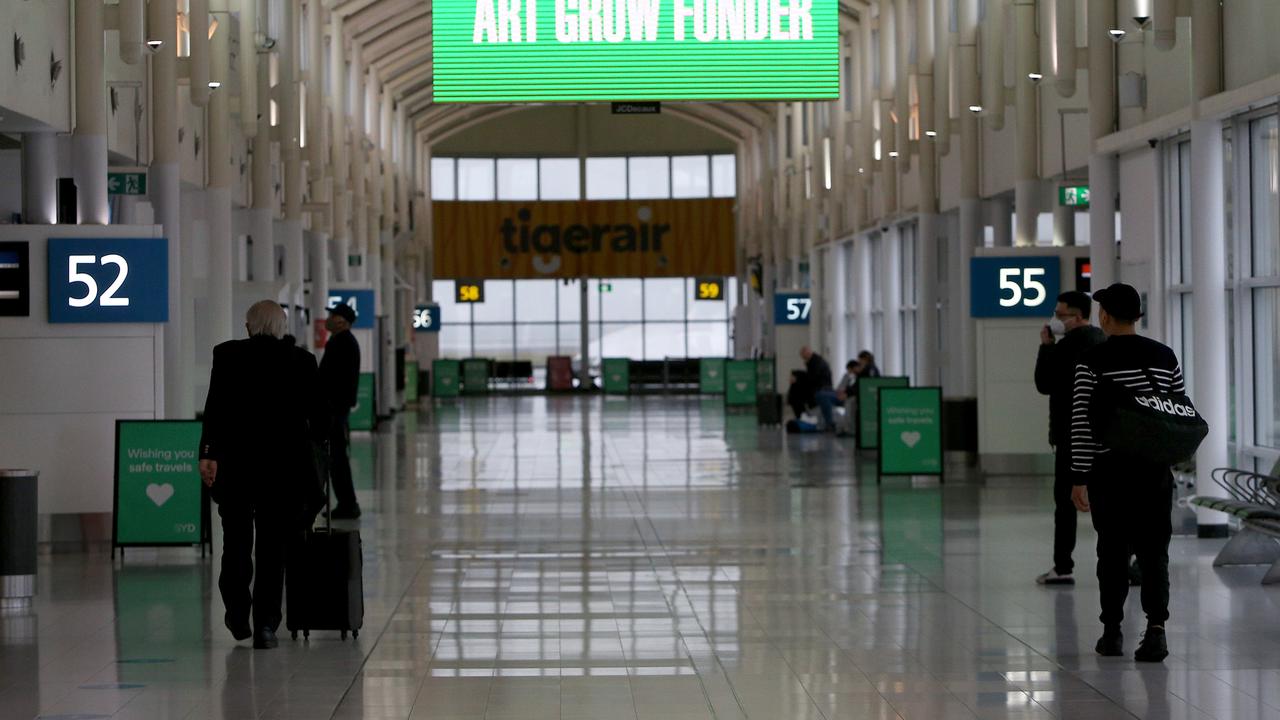The Trump effect and our banks
THE world of down-under banking has to be considered and analysed in the two very different contexts of before and after President Donald Trump, writes Terry McCrann.
Terry McCrann
Don't miss out on the headlines from Terry McCrann. Followed categories will be added to My News.
THE latest result from the National Australia Bank — the first of the big four banks to report — covered trading for the past three months of 2016. It could just as well have been for 2006: it told us about a world that no longer existed.
Now, that’s a bit of an overstatement; it would probably be more accurate to describe it as a world that was in the process of no longer existing.
For like just about almost literally everything in our lives, the world of down-under banking has to be considered and analysed in the two very different contexts of before and after President Donald Trump.
The December quarter was the last clear period for our banks of that “before world”.

Given the unparalleled concentration of banking in Australia into just “the big four” and the dominant part that they in turn play in our share market, the irresistible “Trump effect” on them is going to be hugely significant beyond the narrow, specific, impact — indeed, arguably impacts plural — on their business and their profit.
Further, the big four are coming off an extraordinary “sweet spot” where they’ve been able to wax rich on the back of property lending to first-home buyers and investors alike.
At the very least, the dynamics of the world of banking and specifically their property lending were in the process of changing, if not actually shifting negative, irrespective of the arrival of Trump in the White House.
This showed up in the NAB numbers. Revenue rose just 1 per cent. Yes, there was some business restructuring in that and there was a tiny bit of a rate cut impact, but any way you cut it that did not indicate a business that was roaring along.
On the other side though, costs were up 5 per cent. That should have pointed to a mid single-digits fall in profit. It didn’t — profit eased just 1 per cent — thanks to a 23 per cent plunge in the charge-off for bad and doubtful debts.
We keep asking ourselves how much further can bad debts fall? We might get an answer as 2017 unfolds and the property market “peaks out” and the lending profile of banks and NAB especially shifts more towards higher-risk business lending.
But equally, the government’s assault on superannuation will encourage people to direct more money into property and especially the tax-free family home instead of super.
It’s going to be both opportunity and challenge for the banks in how they play that, in the context of some interesting posers about what’s happening across the Australian economy and what the Reserve Bank might do to interest rates through 2017.
It’ll do nothing today of course and we’ll get a better guide to what its “present intention” to do — more accurately, what it broadly “thinks” it might do — as the year unfolds from its forecasts in its quarterly monetary policy statement on Friday.
That outcome will be driven in very significant part by the “Trump effect”.
We were given a big clue to just how complex and multilayered that effect is going to be by the news out of Washington overnight Friday and its — electric — impact on Wall St.
President Trump announced a move to loosen or abandon the Dodd-Frank restrictions on the US banks. They were imposed by the Obama — Democrat — administration after the GFC, purportedly to stop a repeat of the lending excesses which caused it.
This is not the place to debate all that; but simply — so far as 2017 is concerned — to note that it will likely boost the activities and the profits of US banks, both absolutely and in comparison with other major global banks.
Yes, when we get into 2018 — or more probably a couple of years beyond that, like 2020 — they and the rest of us might wake up with another hangover. But that’s into manana territory; right now, just the expectation of change (how the Trump effect works) sent the US bank stocks on a tear.
THE share prices of the two most “entrepreneurial” — that’s to say, the smartest and greediest guys in the room — Morgan Stanley and Goldman Sachs, leapt around 5 per cent. It was almost as if Lehman and Bear Stearns had risen from the grave.
Now in the first instance, a rising tide could lift all boats. But beyond softer regulation, it could actually hurt them.
Our banks need to compete with the New York and indeed all the other big banks to raise money; they also need to compete with them in lending it.
In a world which is shifting from the chase after safety to a (pre-2008) old-is-new-again world of “entrepreneurial” lending, our banks would be likely to lag.
Yesterday, they appealed because of their low-risk property lending; they were also delivering growth. Tomorrow, that might look stodgy.
Now, before Friday we should have been anticipating the macro Trump effect: destroying the TPP, boosting US economic growth with tax cuts — just the promise of future tax cuts — and a trillion-dollar infrastructure spend.
Friday told us to start thinking about a myriad of likely micro Trump effects.
Again, the anticipation can be as significant — it’s certainly more immediate — than the eventual delivery.
Think about it, prepare for it. 2016 was really a very placid, sort of a Sinatra easy-listening year. 2017 is going to be full-on 24/7 Jerry Lee Lewis-style rocking and rolling and roiling.
PRESIDENTIAL BUT MAYBE TERMINAL
MALCOLM Turnbull clearly spent the Christmas break, working to fundamentally change his presentation style.
It’s been a very different Turnbull in his two big media appearances so far — his speech to the Press Club in Canberra and his interview with Laurie Oakes on the Nine Network’s 60 Minutes.
Gone was the umming and aahing — the way he would start an answer and then immediately interrupt himself with a qualification or contradiction — and the use of his glasses as a rather nervous, unconvincing prop.

In its place has been a confident, seamless delivery — helped by an autocue in Canberra, but obviously not so on 60 Minutes — and a broad equally confident smile has replaced the nervous half smile that punctuated the umming.
He’s been projecting very prime ministerially, even presidentially.
Pity about the substance: the “thought bubbles” version of the umming are still there.
The one about “clean coal” — his supposedly cut-through play at the Press Club — has been the standout so far.
Cut-through? Schmut-through. Even the “cleanest” of new coal-fired power stations has got exactly the same chance of happening as a 15 per cent GST. That’s to say: zero.
Not because we shouldn’t have one; of course we should.
Or better, as in cheaper, still — just keep the existing ones.
But that it’s just not going to be delivered by this government under this PM against the usual hysteria.
Stylish, even prime ministerial, presentation is at best a third, possibly ’nth, order issue.
It has to project — as Trump has shown so clearly — the first, second and how many other order things: policy clarity and even more strong policy promise.
Pastel or beige policy offerings just don’t cut it. A PM promising to deliver only slightly less costly but still irrational forms of energy, of promising to cut company tax to a still too-high rate over 10 years, etc.
Finally, the very modelly model of a prime ministerial PM.
Just as ...
Originally published as The Trump effect and our banks


